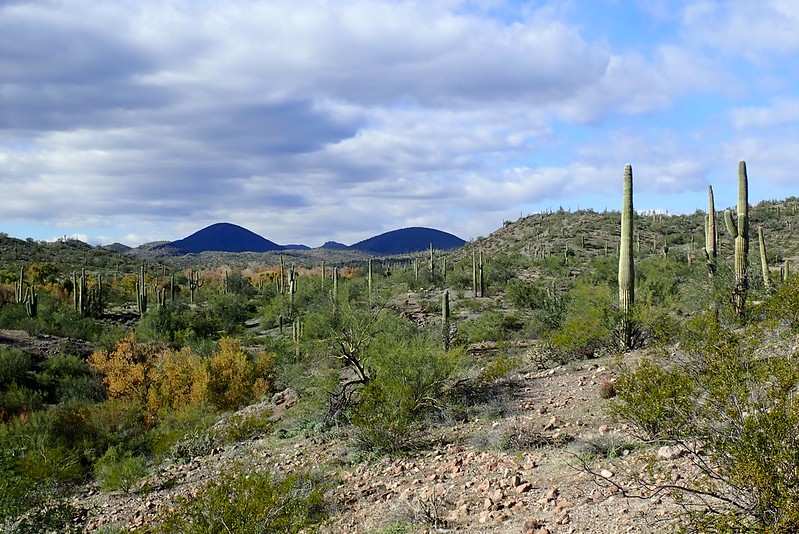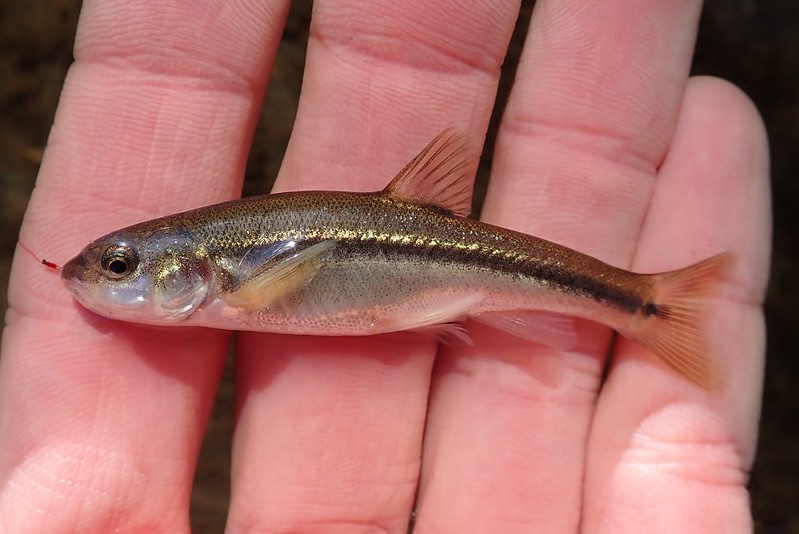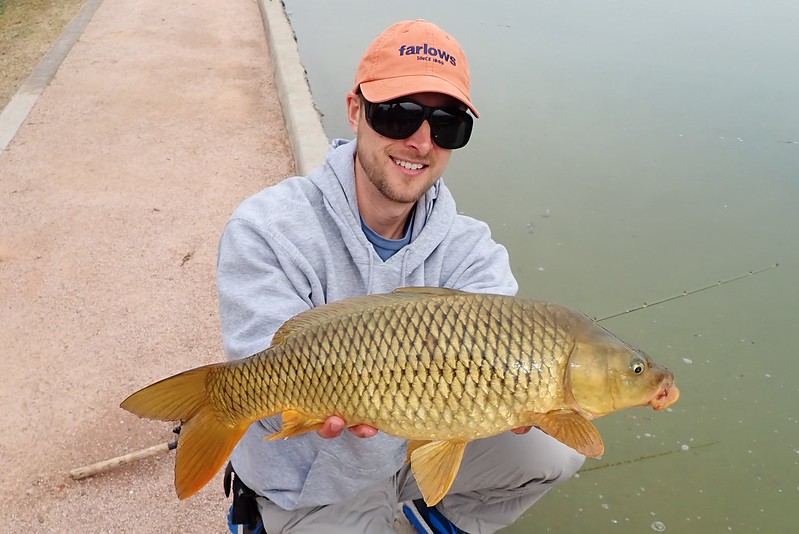Between Christmas and New Years I had a few extra days, so I drove over to Phoenix to do some winter fishing with my friend Chris and his boys. It had been colder than usual in Arizona, which would likely make the fishing tough, but Chris promised I could at least add longfin dace to my list, and that was good enough for me.
I arrived Saturday afternoon, transferred my microfishing gear to Chris's truck, and we drove over to a nearby stream to fish for dace. It was a 15 minute hike from the parking lot, which was a good thing, because you should have to work a little bit for new species.
Desert streams always seem to defy their surroundings, and this one was no exception. Once we scrambled down the small canyon to the creek, it was easy to forget that we were in the middle of the desert.
The stream was loaded with dace. They appeared equally at home in the deep slow pools and the swifter runs with undercut banks. I found a group of larger individuals, put a piece of aquatic insect on my hook, and pulled up a good looking male.
Longfin Dace (Agosia chrysogaster) - new hook & line species #652
I caught a few others that were larger, but none had a lateral stripe as distinct as the first one. At the time I assumed some of the chunkier fish were females, but looking through my photos it seems they all have traces of tubercles on their heads, so I guess that makes them all males.
A few of the longfin dace had fully developed tubercles, which meant they would be spawning soon. We also saw juvenile fish from the previous spawn.
The next morning I headed out before sunrise to spend the day on the Salt River. I had caught a Sonora sucker at this spot back in 2014, but I was looking forward to getting an updated photo of one in better light. More importantly, I hoped to have a shot at a desert sucker, which are more difficult to catch than Sonoras because they feed predominantly on algae. When I arrived at the river my car's thermometer said 27 deg. Would the fish be biting?
I spent the first few hours at the same spot I fished back in 2014. The angle of the morning light made it impossible to see into the pool, but I figured there must be suckers hanging out in the deepest part. I swapped out my bait (half a nightcrawler) every 15 minutes or so, but no one was interested.
Eventually I gave up and packed up to try somewhere further upstream. As I was crossing the riffle, I spotted a small fish tucked in the strands of algae. It didn't look like something that wanted to eat, so I scooped it up with my hand. It was a sailfin molly, and it looked like it was probably not going to survive the cold.
Sailfin Molly (Poecilia latipinna)
The sun was now higher in the sky, and I was able to see clearly into the pool at the second spot. I wasn't surprised to see dozens of suckers. Most looked to be Sonoras, but a few looked more grey in color and might have been deserts.
Unfortunately, being able to see the fish didn't help me catch one. I was able to cast past a large sucker perched on the slab rock and slowly reeled in until my half a nightcrawler was brushing gently against the front of its lip. Even then, they showed no interest in eating. There were largemouth bass and common carp cruising around as well, and they also showed zero interest.
On the third day we tried to salvage the trip by having me catch a Nile tilapia or a koi. The tilapia, if it looked convincingly like a pure Nile, would be a new species, but the koi would just be a novelty for my list of angling accomplishments, since it's the same species as common carp. We looked for Nile tilapia in a body of water that's fed by a wastewater discharge and empties into the Gila River,.
The low temperatures were still affecting the fishing, but eventually we each catch a few tilapia. The dorsal and anal fin shapes (rounded at the back) and tail markings (broken and wavy bars) suggested blue tilapia. They were likely hybrids, but they certainly couldn't be called Niles.
Blue Tilapia (Oreochromis aureus)
We also saw half a dozen large plecos hanging out on the concrete embankment. Plecos are a warm water species, so it wasn't surprising that they showed no interest in eating. Even in the warmer months they're an extremely challenging species to catch, but next time I'm in town I'd like to give it a shot.
I needed to head back to San Diego soon, but we had time for one more spot, a series of urban ponds stocked with koi and common carp. We walked up to one of the lakes to find a big school of roughly twenty koi swimming about. I tossed a couple of handfuls of canned corn, and within a minute or two they were feeding. I cast a small hook baited with a few kernels of corn into the mix, and within seconds I had a fish on. Was it a bright orange koi? Nope, it was one of the few common carp!
Common Carp (Cyprinus carpio)
The school of koi scattered during the fight with the carp, so we had to move spots and start a new feed going. It took an hour or two, but eventually I had a couple of the bright orange koi feeding again. I cast out, waited a few minutes, and then once again had a nice fish on the end of the line. And it was... drum roll please... another common carp!
I'll admit this road trip wasn't the most productive in terms of new species, but it did get me excited for my next trip to Arizona this spring or summer when it's warmer. I want to try for the two native species of trout - Gila and Apache - and pick up any other natives along the way. Urban fishing in Phoenix should be able to produce a pure Nile tilapia (Chris has good info on them being stocked), plus the abundant inland silversides in Tempe Town Lake. And for good measure I really would like one of those bright orange koi!














No comments:
Post a Comment
Note: Only a member of this blog may post a comment.